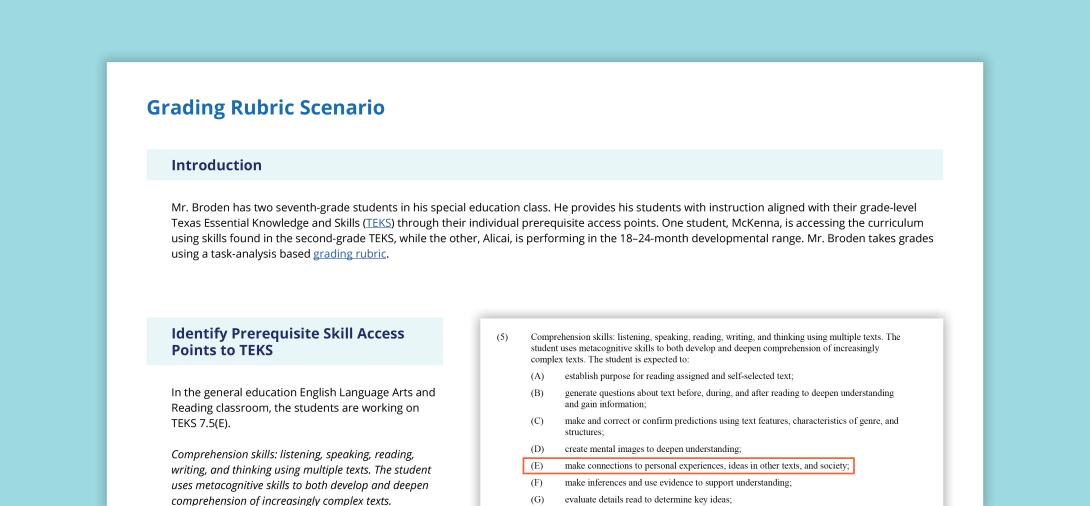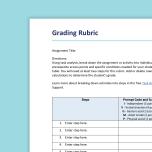Grading Rubric for Students with Complex Access Needs: Classroom Scenario

This grading rubric scenario uses the Sample Grading Rubric for Students with Complex Access Needs and demonstrates how to:
- identify prerequisite skill access points to TEKS
- provide instruction that integrates individual accommodations and modifications
- pre-plan individual supports
- use task analysis to determine individual student mastery of an assignment or activity
Follow along with Mr. Broden, a middle school self-contained special education teacher, as he plans instruction and activities for two of his 7th grade students, McKenna and Alicai.
As a reminder, educators may find this grading rubric most useful for students who are accessing the curriculum (TEKS) at prerequisite levels and routinely participate in alternate or non-traditional methods of assessment. These students may be in the process of developing a functional and consistent mode of communication (e.g., currently non-verbal, uses very limited non-symbolic communication) and require individualized supports (e.g., modifications, task analysis, direct instruction, assistive technologies, first/then charts, tactile schedules, social narratives) and ongoing adult assistance (e.g., prompting, cueing, physical assist) to participate in on-topic academic exchanges.
Additionally, this grading rubric can be helpful for students who are able to complete part of a task independently but require scaffolded supports for certain steps within the task.
This document aligns with the Rubric of Effective Practices for Students with Significant Cognitive Disabilities Quality Indicator II: Effective Teams.




